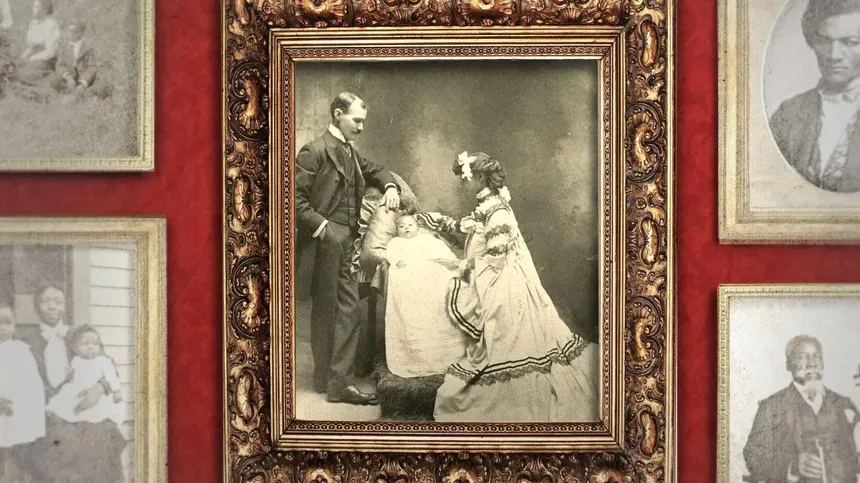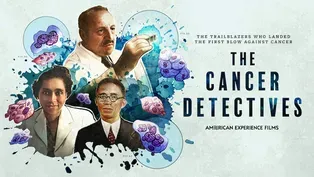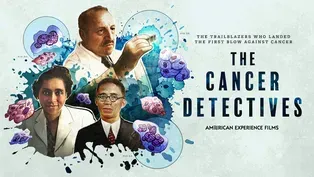
Why the Pap smear almost never saw the light of day | What the History?!
Clip: Season 36 Episode 3 | 5m 4sVideo has Closed Captions
What do guinea pigs, eugenics and Japanese incarceration during WWII have in common?
What do guinea pigs, eugenics and Japanese incarceration during WWII have in common? They all play a role in the story of the Pap smear.
Problems playing video? | Closed Captioning Feedback
Problems playing video? | Closed Captioning Feedback
Corporate sponsorship for American Experience is provided by Liberty Mutual Insurance and Carlisle Companies. Major funding by the Alfred P. Sloan Foundation.

Why the Pap smear almost never saw the light of day | What the History?!
Clip: Season 36 Episode 3 | 5m 4sVideo has Closed Captions
What do guinea pigs, eugenics and Japanese incarceration during WWII have in common? They all play a role in the story of the Pap smear.
Problems playing video? | Closed Captioning Feedback
How to Watch American Experience
American Experience is available to stream on pbs.org and the free PBS App, available on iPhone, Apple TV, Android TV, Android smartphones, Amazon Fire TV, Amazon Fire Tablet, Roku, Samsung Smart TV, and Vizio.
Buy Now

When is a photo an act of resistance?
For families that just decades earlier were torn apart by chattel slavery, being photographed together was proof of their resilience.Providing Support for PBS.org
Learn Moreabout PBS online sponsorshipToday, pap smears are part of pop culture.
[TV clip] “I have to get a pap s [TV clip] “The paps arent going to smear themselves.” [TV clip] “What is a pap smear?
Or is it ‘schmear.” It's feared by some, a mystery to others, or a punch line.
But before the pap got popular and saved one million lives, it was ignored b the medical community for decade The true history of the pa smear is a story about eugenics, Japanese incarceration during World War II, and...guinea pigs?
It's also the story of what it t to bring the test out of the shadows and into the mainstream.
Meet Mary, the first person ever to get a pap smear.
And this is her husband, Dr. George Papanicolaou.
Mary and George emigrated from Greeceto the United States in 1913.
George, a trained doctor and zoologist, got a job at Cornell Medical School workin in the Department of Anatomy.
Mary was his lab technician.
While studying reproduction in guinea pigs, George came up with the idea of taking vaginal samples from the animals over time s he could see how the cells chang Mary would smear the samples on the slides and then stain them for study under a microscope.
And so the Pap smear named after Dr. Pap, was born.
Then in 1920, Mary took on an even mor personal role in their research.
She volunteered to get the first ever human pap test.
That one test turned into hundre before George got access to more patients.
And that was when he had an a-ha moment: The pap tests could identify pre-cancerous cells.
So how does the pap smear work?
The test takes a swab of cells from the cervix so they can be analyzed for abnormalities.
Dr. Pap's innovation came fro the way the cells were collected Before his method, cervical cancer screenings meant invasive and painful biopsies.
And at the time, it was the most deadly form of cancer, largely because it wa always identified too late.
He tried to publicize his findings but one of the best places to get attention from the medical community was at the Race Betterment Conference.
A high profile event by promine members of the eugenics movement George's presentation flopped.
Other doctors didn't see the need for a test beyond the biopsy.
So the pap smear faded int obscurity for more than a decade And because of it, more women needlessly died.
George knew that to get peopl to pay attention to his research he needed a better way to share his findings.
And he knew just who to call.
Hashime Murayama was a talented scientific illustrator who worked down the hall from the Paps back at Cornell Medical College In 1921, National Geographic hired Muray to create art for its magazine.
Now, 20 years later, Dr. Pap got in touch with his old friend.
He knew that Murayama would crea beautifully detailed illustrations of the slides Mary had been staining daily for years.
But there was a problem...
When the U.S. declared war on Japan after Pearl Harbor, it also began arresting innocent Japanese American citizens.
And in 1943, Murayama was incarcerated in a camp on Ellis Island.
But George and other colleagues testified to his innocence, and Murayama was freed After the new book of research, including Murayamas art, was released, it became widely accepted.
The Papanicolaous work finally won the support of the medical community.
And things didn't end there.
Dr. Paps lab would become a teaching center with Mary training hundreds of technicians to prep and analyze samples.
Murayamas illustrations were hung on the walls of the labs for reference.
And even after scientists pionee the test, it took an army of dedicated doctors, health care workers and community activist to bring the pap to the people.
After that first test, Mary personally had thousands more over the course of her life all in pursuit of makin early cancer diagnosis possible.
So the next time you hear the wo pap smear, think of Mary Papanicolaou, the woman who first volunteered to get a simple but critical test, and the more than one million li that have been saved by it.
For more on the pioneers who fought to save women from cervical cancer, watch The Cancer Detectives on American Experience.
Chapter 1 | The Cancer Detectives
Video has Closed Captions
Clip: S36 Ep3 | 8m 55s | Watch a preview of The Cancer Detectives. (8m 55s)
Trailer | The Cancer Detectives
Video has Closed Captions
Preview: S36 Ep3 | 1m 35s | The untold story of the people who fought tirelessly to save women from cervical cancer. (1m 35s)
Providing Support for PBS.org
Learn Moreabout PBS online sponsorshipSupport for PBS provided by:
Corporate sponsorship for American Experience is provided by Liberty Mutual Insurance and Carlisle Companies. Major funding by the Alfred P. Sloan Foundation.















